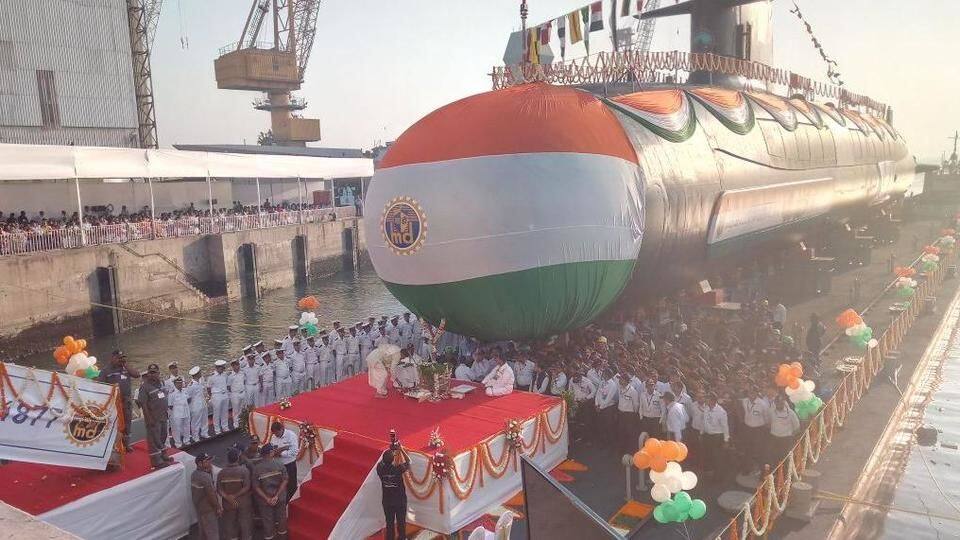
Navy launches INS Karanj, third Scorpene-Class submarine, after much delay
What's the story
The Navy launched the INS Karanj, India's third Scorpene-class submarine, today at Mumbai's Mazagon docks. It is expected to be inducted by 2019. The first, INS Kalvari, was commissioned last December. The second, INS Khanderi, is undergoing sea trials. Though today was one more step towards the Navy's goal of indigenously building six such submarines, the process has been marred by delay. Here's more.
Twitter Post
Third Project-75 sub launched
Karanj launched at MDL Mumbai. Big day for @indiannavy pic.twitter.com/FEH6bRK20G
— SpokespersonNavy (@indiannavy) January 31, 2018
About
The new Karanj is fitted with advanced stealth features
INS Karanj is 67.5m long and 12.3m tall. The fin, hydroplanes and hull form are designed to produce minimum underwater resistance. All Scorpene-class submarines have advanced stealth features like sophisticated acoustic silencing techniques, low radiated noise and capacity to launch attacks with precision-guided weapons. Karanj can function in all theaters, and interoperability with other components of a naval task force has been ensured.
Do you know?
A reincarnation of an older submarine
Karanj is a reincarnation of an old submarine with the same name, which was commissioned into the navy in September 1969 and retired in 2003. During the 34 years of operations, it also served during the Indo-Pakistan War of 1971.
Project-75
The Navy's Rs. 70,000cr project for six indigenous subs
Under Project-75, the Navy plans to build six submarines indigenously. All have been designed by French company DCNS, and built in Mumbai by Mazagon Docks Limited. The first four will be conventional subs, while the others will be equipped with Air Independent Propulsion systems, enabling them to stay underwater longer. All are scheduled to be inducted by 2020 at a cost of Rs. 70,000cr.
Delay
Long delays have left the Navy short of subs
However, plans have been hit by drastic delays. Kalvari was to be delivered by 2012, but was inducted in December'17. Till all are done, India will have to make do with 13 subs; meanwhile, China has 68, US has 70, and North Korea has 78. Defense expert Commodore (retd.) C Uday Bhaskar attributed the delay to lacking efficiency, slow decision-making and slower implementation.